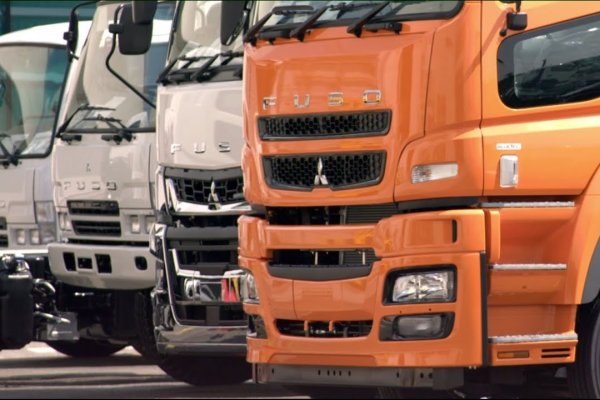Published on the 25/10/2019 | Written by Heather Wright

Sensors in trucks was just the first step…
From predictive maintenance and fleet monitoring and routing to safety and more efficient terminal operations, IoT is making its presence felt in the transportation market, but it’s the combination of IoT and other technologies promises the biggest bang for buck.
That’s a world Deloitte calls ‘true IoT ecosystems’, and it’s one that encompasses technologies including predictive analytics, artificial intelligence and cloud, integrating disparate systems to provide increasing levels of digital capability.
“The advantage to IoT is visibility; the advantages to a connected IoT system are more educated and efficient supply chain decisions.”
![]() In Creating IoT Ecosystems in Transportation, Deloitte says outfitting trucks with IoT sensors was merely the first step in creating a new connected ecosystem.
In Creating IoT Ecosystems in Transportation, Deloitte says outfitting trucks with IoT sensors was merely the first step in creating a new connected ecosystem.
“The advantage to IoT is visibility; the advantages to a connected IoT system are more educated and efficient supply chain decisions that can drive value to the business,” Deloitte says.
Transportation is a key area for IoT solutions, with IDC forecasting a US$71 billion spend for the market this year, putting it behind only discrete manufacturing ($119 billion) and process manufacturing ($78 billion). Leading the transportation spend, according to IDC, will be freight monitoring, taking more than half the spend at $41.7 billion, followed by fleet management.
Meanwhile the latest Intelligent Enterprise Index, from IT vendor Zebra, which surveyed healthcare, manufacturing, retail and transportation and logistics industries, claims a record 61 percent of enterprises worldwide are on the road to becoming ‘intelligent’ – up from 49 percent in 2018 – with the figure driven largely by gains in retail and transportation and logistics.
There’s no doubt, then, that IoT is playing an increasingly important role in transportation and logistics, but identifying the winning plays seems to be a harder task.
While Deloitte doesn’t outline where exactly transportation and logistics companies are seeing the biggest bang for their buck, it does highlight key areas of potential.
No surprises that fleet monitoring and routing and predictive maintenance – both long held up as IoT winners for the sector – are in the mix.
Deloitte’s highlights how DHL’s fleet management solution, SmarTracking is expected to reduce transit times by up to 50 percent and increase real-time tracking reliability to more than 95 percent across India. The system uses sensor-enabled trucks and predictive analytics, intelligent data science and on-board diagnostics used to make real time decisions about routing and fleet allocation.
“In addition to advanced safety and better predictive maintenance, transporters [using an IoT ecosystem] can make use of driver assist technologies to determine conditions suitable for fleet platooning in order to reduce draft and increase fuel efficiency,” Deloitte says.
On the safety side, Deloitte says in-vehicle telematics solutions using accelerometers, trackers and engine monitors to gather data on location, fuel consumption, speed and braking, are being harnessed to feed safe-driving analytics applications.
“Analysts expect IoT telematics solutions to reduce both fuel consumption and the cost of incidents and insurance.”
IoT is also enabling compliance with food safety and pharmaceutical requirements and cutting losses, through more effective cold-chain product life management. One unnamed retailer has projected annual savings of US$1.3 million in cold chain compliance and asset efficiency through the use of sensors allowing real-time temperature and humidity monitoring while product is being transported.
It’s not just out on the public roads where IoT ecosystems are playing a role for transportation.
IDC notes that airport facility automation is expected to see the fastest spending growth in the transport sector over the 2017-2022 forecast period.
Deloitte, meanwhile, highlights the example of a port using object detection sensors to track trucks, with and without cargo, lining up at ports with multilane terminals. Using cloud based predictive analytics the system alerts to congestion issues for cargo-laden trucks, enabling the port to redirect and streamline traffic.
“With the help of an IoT-enabled ecosystem leveraging AI, the port authorities are able to increase lane efficiency, reduce truck turnaround time and improve operations planning at the terminal,” Deloitte says.
“IoT systems that stitch together sensor-based data with legacy systems (such as transportation and warehouse management systems) and newer technologies, such as cloud-based storage, AI and predictive analytics, hold tremendous promise for those engaged in moving goods,” the company says.
But it cautions that good things takes time and moving from a manual, often paper-based world to a digitally enabled and fully integrated enterprise happens in steps.
While tracking and tracing capabilities enables companies to detect variations, such as delays and noncompliance and act on real-time data, it is another step to the integrated state where IoT, in conjunction with other technologies can be used to predict events and enable real-time dynamic decision making.
“To unlock the full competitive advantage and drive down their operational costs, organizations should think about integrating IoT technologies with automation and analytical capabilities.”



























